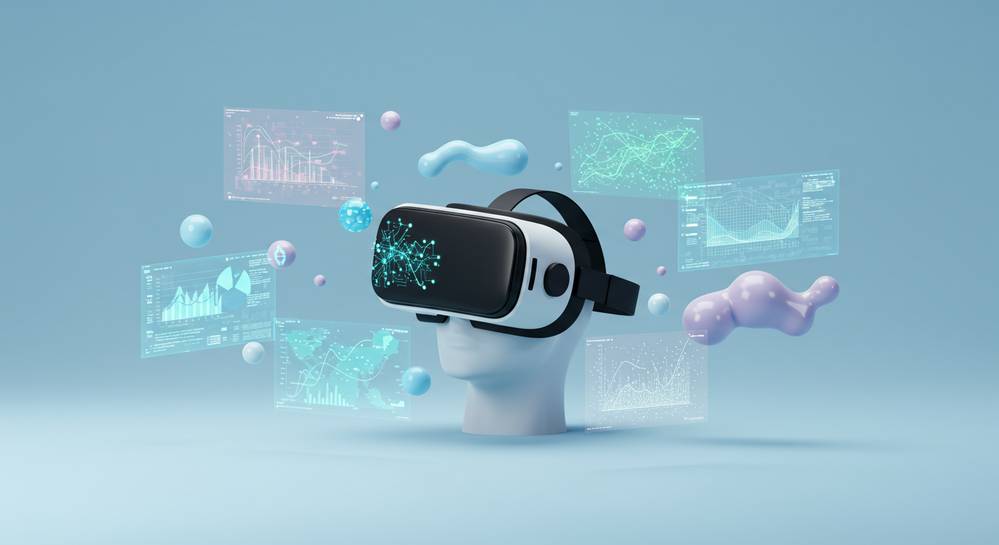The landscape of virtual reality is evolving at an unprecedented pace, with continuous advancements pushing the boundaries of what is possible. Staying informed about vr technology innovations news is crucial for understanding the profound impact these developments have across various sectors. From enhanced hardware to sophisticated software and transformative applications, VR is rapidly moving beyond niche entertainment to become a powerful tool for industry, education, and social interaction. This article delves into the most significant breakthroughs shaping the future of immersive experiences.
Revolutionizing VR Hardware: Lighter, Sharper, Faster

Next-Gen VR Displays and Optics
Recent vr technology innovations news highlights a pivotal shift in hardware. Headsets are now lighter, sharper, and faster, enhancing user comfort and immersion. Next-gen VR displays, like micro-OLED and QLED, deliver unparalleled visual clarity. They virtually eliminate the screen-door effect. Resolutions exceeding 4K per eye are standard, with wider fields of view and 120Hz refresh rates. This drastically reduces motion sickness, creating smoother virtual experiences.
Pancake optics are crucial for achieving lighter, more compact form factors. This innovation enables thinner lenses and better weight distribution. Headsets feel less cumbersome. The industry targets glasses-like designs, boosting user comfort for extended sessions. This design evolution is critical for widespread adoption.
Advanced Interaction and Haptic Feedback
Eye-tracking technology is now commonplace. It facilitates foveated rendering for optimized graphical performance. This technique renders only the user’s focal point in high detail, conserving processing power. Sophisticated haptic feedback systems bridge the virtual and physical divide. They offer nuanced tactile sensations, from subtle textures to realistic force feedback. This deepens immersion across applications.
Software Breakthroughs and Content Ecosystems
AI-Driven VR Experiences
The latest vr technology innovations news confirms a significant shift in VR software. Artificial Intelligence is now central to creating dynamic virtual worlds. AI powers realistic non-player characters (NPCs) with complex behaviors and natural conversational abilities. This makes interactions more believable and engaging for users.
Adaptive environments, driven by AI, respond intelligently to user actions. This creates personalized experiences, making each VR session unique. Advanced rendering techniques further enhance immersion. Neural graphics and volumetric video deliver stunning visual fidelity. Sophisticated spatial audio makes virtual worlds feel truly alive and responsive.
Expanding Content Ecosystems and Tools
The nascent concept of the Metaverse sees robust investment in content creation. Platform interoperability is also a key focus. This fosters diverse virtual spaces for social interaction, gaming, and professional collaboration. Such developments are crucial for mass adoption.
Developer tools are becoming more intuitive and powerful. The emergence of low-code solutions accelerates high-quality VR content creation. This spans intricate simulations to expansive multiplayer games. These advancements ensure a rich and varied content landscape for the future of virtual reality, as highlighted in recent Artificial Intelligence discussions.
Transformative Applications Across Industries

VR Technology Innovations in Healthcare and Education
Recent vr technology innovations news reveals VR’s profound impact beyond entertainment. In healthcare, VR revolutionizes surgical training, offering realistic, risk-free environments. It aids in pain management through distraction therapies and provides innovative mental health interventions. This transforms patient care and medical education.
Educational institutions are also rapidly adopting VR for immersive learning. Students can explore ancient civilizations or conduct complex scientific experiments virtually. This enhances engagement and comprehension. VR provides unparalleled access to experiences previously impossible, democratizing advanced learning opportunities.
Enterprise and Training Applications
Enterprises across sectors leverage VR for remote collaboration. Geographically dispersed teams meet in shared virtual workspaces, boosting productivity. VR is invaluable for product design and prototyping, allowing engineers to visualize and test concepts in 3D. This accelerates development cycles and reduces costs.
Furthermore, VR-based employee training offers highly engaging solutions for complex tasks. This ranges from emergency response simulations to customer service scenarios. These practical applications underscore VR’s growing utility and its potential to drive significant innovation, bridging the gap between theoretical knowledge and practical application, much like the concepts explored in Robotics vs AI vs Machine Learning.
Challenges, Ethical Considerations, and the Road Ahead

Overcoming VR Adoption Hurdles
Despite significant vr technology innovations news, widespread VR adoption faces challenges. High costs for premium hardware and compelling content remain a primary barrier. Many consumers and businesses find the initial investment prohibitive. This limits market entry and slows growth.
Accessibility is also paramount. VR must be usable and comfortable for diverse individuals, including those with physical limitations. Thoughtful design and inclusive development are essential. Addressing these issues ensures VR technology reaches its full potential, moving beyond niche markets.
Ethical Considerations and Future Outlook
Interconnected virtual spaces introduce critical privacy and data security concerns. Safeguarding user data is crucial as engagement in virtual economies expands. Regulatory frameworks must evolve to protect users. The long-term effects of prolonged VR use on cognitive function, visual health, and social behavior also require ongoing scientific research.
The road ahead demands continued innovation. Focus on reducing costs and improving user comfort is vital. Establishing robust ethical frameworks will build trust. The future of VR promises more compelling, integrated, and universally accessible experiences, gradually overcoming these hurdles for mass adoption.
The rapid pace of vr technology innovations news underscores a future where virtual reality is seamlessly integrated into our daily lives and professional endeavors. While challenges such as cost, accessibility, and ethical considerations remain, the trajectory of progress is undeniable. As hardware becomes more powerful and software more intuitive, VR is poised to unlock unprecedented opportunities, redefining how we learn, work, and connect. For ongoing insights and the latest developments, explore Global Affairs News.
